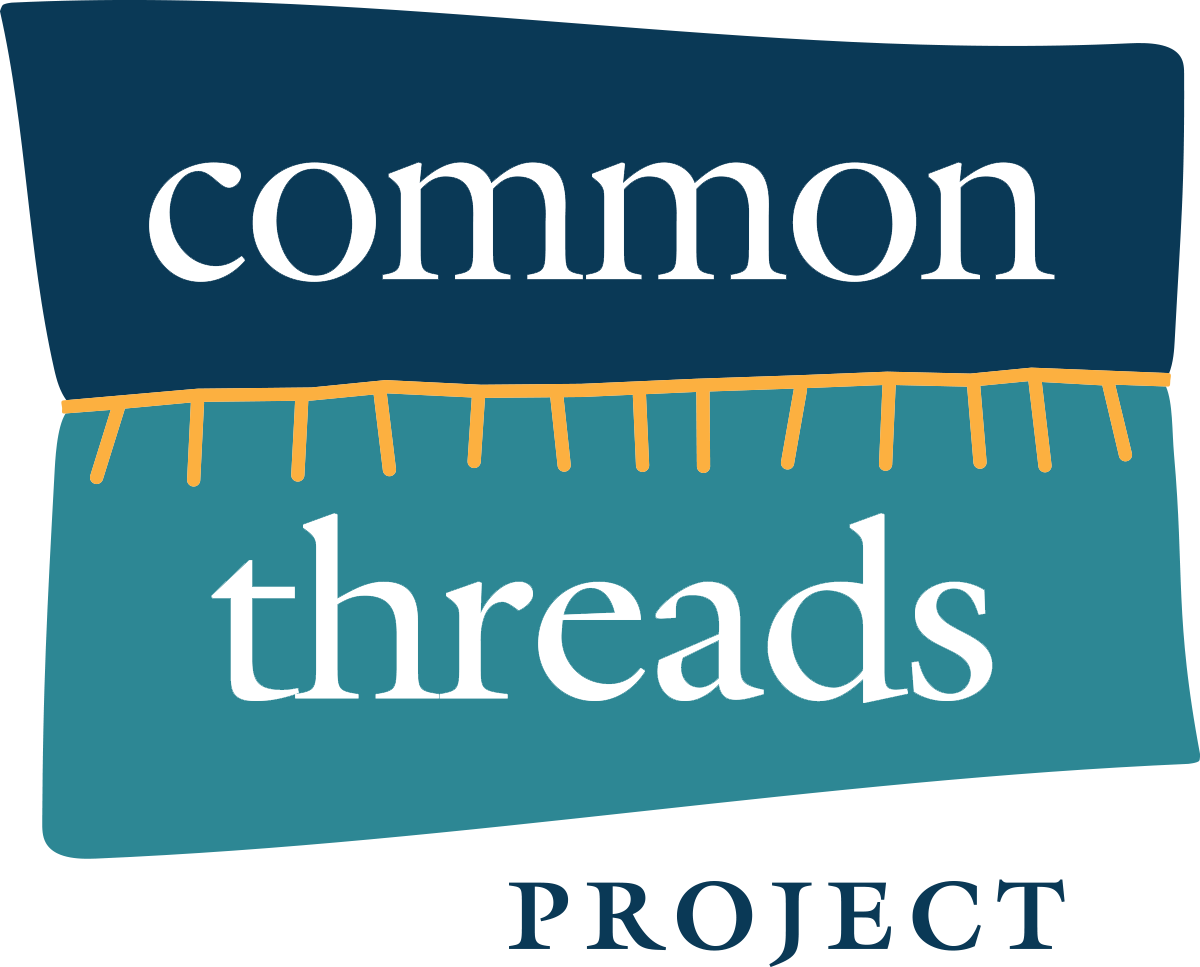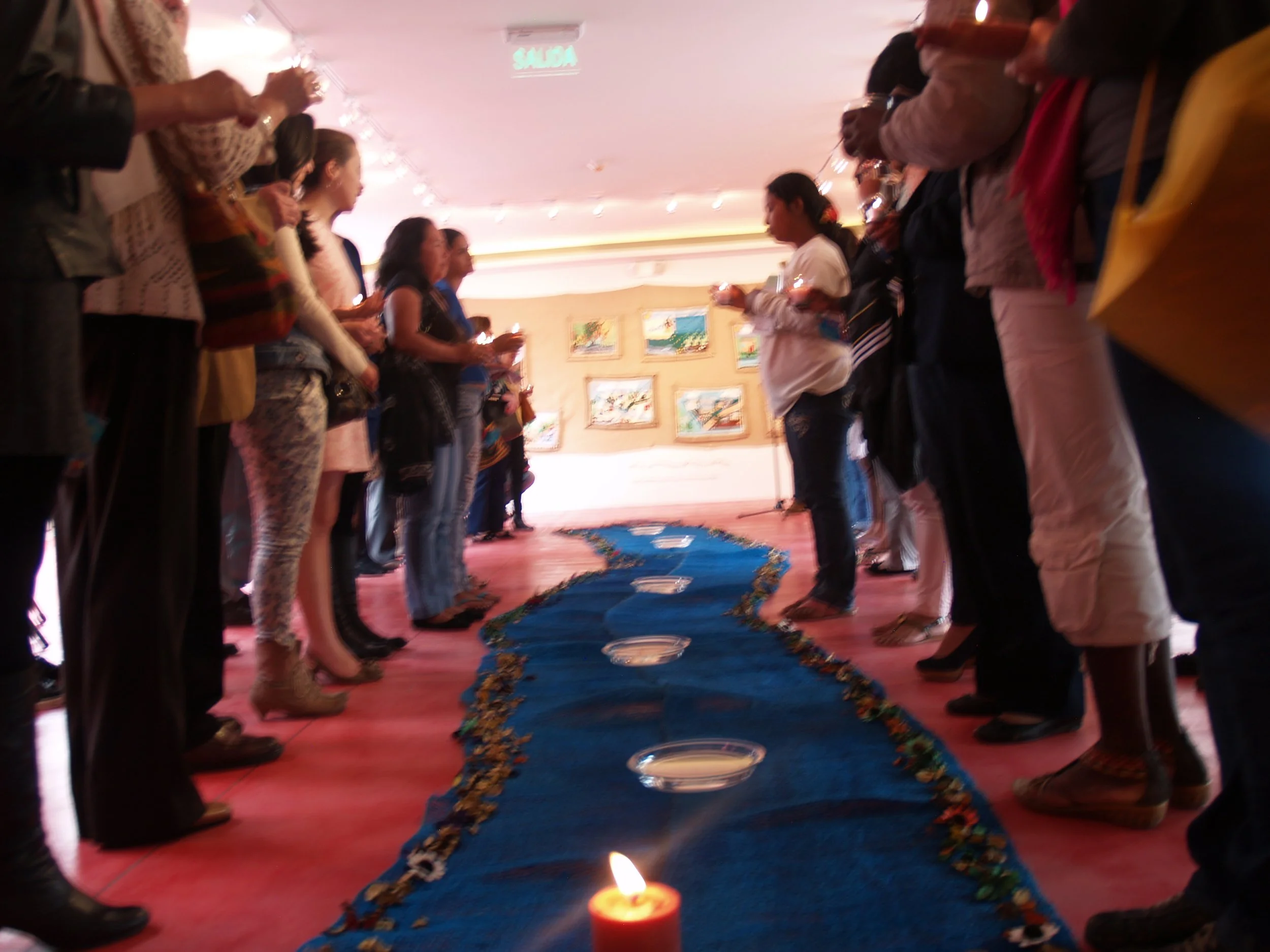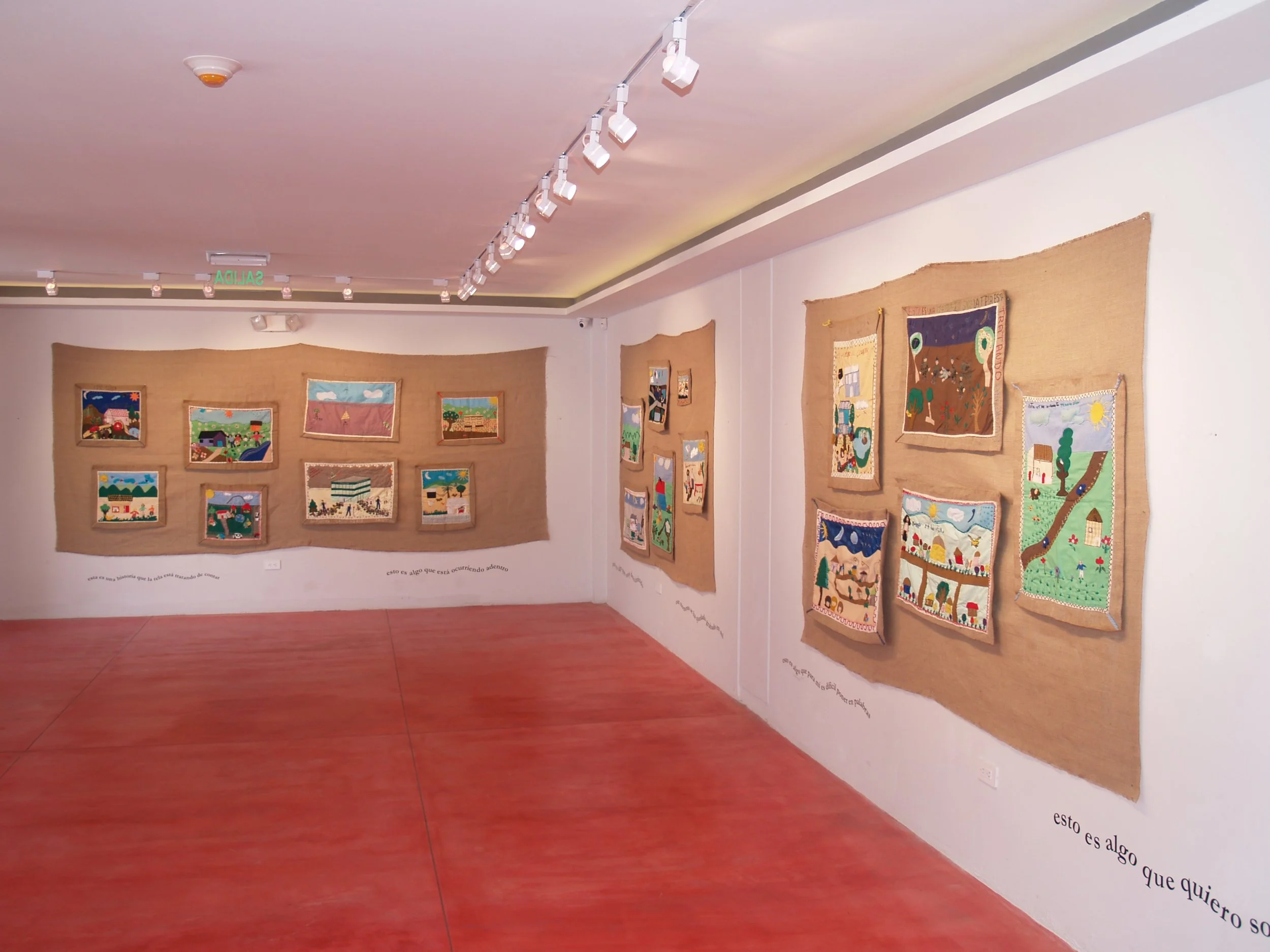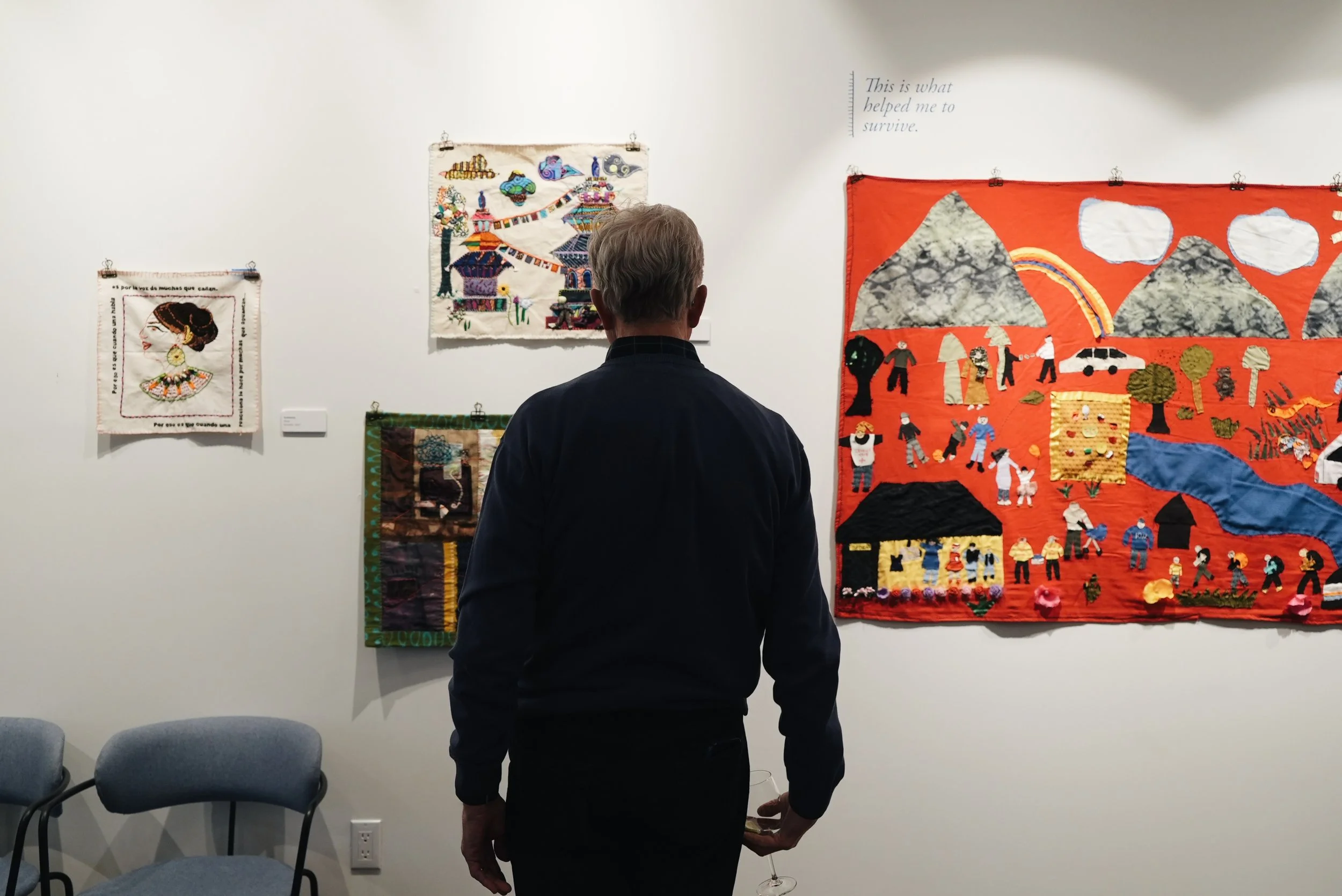From Healing to Activism
In the years since our original collaboration, the Federación de Mujeres de Sucumbíos (FMS) has continued to integrate arpilleras (story cloths) into their activism and other work.
“In FMS, we like to think about arpilleras as the seed that allowed a possibility of transformation for all women … The seed has grown thanks to the care that women from FMS gave it. It has spread out and now reaches the public space.”
Each year, on the International Day for the Elimination of Violence Against Women, FMS holds a vigil. They invite community members from across the province to gather and sew all night, making a cloth in memory of the victims of femicide. In the process, women find their voices through art and forge community.
“We put our hearts into it. We embroider and sew an arpillera together to keep the memory of this moment and to spread a message of collective freedom, because we can only be free when we are together.”
This connection between trauma healing and advocacy has been seen from the beginning.
Some of the very first participants of Common Threads Project groups held an exhibition of their arpilleras in Quito in late 2013. They attended the launch of the exhibition, spoke publicly about their experiences, and advocated for SGBV prevention. Later a group of story cloths traveled to Geneva, Switzerland, where they were shown at the UN Palais des Nations.
CTP participants from other programs around the world have done the same: sharing their story cloths to advocate against gender-based violence and make their experiences heard.
Whether speaking out against violence in the mines of DRC or caste-based discrimination in Nepal, these story cloths are powerful testimonies that speak volumes.
You can bear witness to just a few of these stories in our ongoing digital exhibition, the Fabric of Healing.






